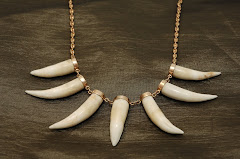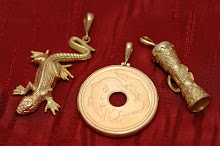The people are seasoned seafarers who traded in the traditional
Kula expeditions, travelling miles in magnificent sailing canoes to barter for
food items, clay pots and other necessities. With every gesture and act of
friendship was born a link in the Kula ring. Shell money known as “bagi” and “mwali” were the legal tender in those days. A “bagi” or “mwali was used
to even buy land or a bride. The shell money continues to be used, albeit
rarely, for certain exchanges particularly of cultural significance.
To commemorate the Kula voyages and to keep their customs
alive, the Milne Bay Canoe Festival was born seven years ago. And what better place
to stage this annual festival than on the northern shore of Milne
The canoe festival is not just about canoes nor is it about
racing. The need to weave the significance of the cultures of the Kula trading
ring into the three-day event was obvious. Visitors were not disappointed to
see traditional dance groups performing side by side with youth theatre and
string bands.
In the festival program distributed to visitors, the
organizers explained that; “The Milne Bay Canoes were traditionally used for
purposes other than racing and this has got to be reflected in this year’s
festival. It is very important that we display and reflect not only an
experience during this festival but also shed a bit of light on the way we live
and do things when it comes to canoeing; because that in essence, is who we
are.”
A whole week was spent assembling canoes that sailed from the
islands and various villages along the coast plus two from other provinces. The
Epepeoa (Epoi) from Esa-ala; decked Sailau from Dawson Island; non-decked
Sailau from Samarai Island; Sailau from Paneati; Kukakuka from Wedau; Lopo from
Alotau and the Nagega were amongst the notable canoes. Many of the participants
lodged at the Festival
Village
A total of 50 canoes and about 1000 participants registered
for the festival including one canoe from Tufi in the Oro Province Milne
Bay Milne Bay
The haunting sound of
the conch shell beckoned the transportation of pigs from nearby Rabe village to
Alotau. The pigs were presented as gifts by the host villagers on the mainland
to the visitor canoes that travelled from afar to participate in the festival.
After that the conch shells remained silent while the traditional Kula canoes
were welcomed in the Kula way strictly under the Kula protocol and custom.
The other canoes followed suit and pig distribution as a
gesture of appreciation was conducted by the Rabe dancers under their own
protocol.
The highlight of the morning was the arrival of the
dignitaries led by the Governor General of Papua New Guinea
Speeches marked the official opening of the festival before
the day’s events unfolded. With the strong south-easterlies blowing onshore, sailors
grappled with masts and skillfully dodged the white caps to announce their
arrival. The long dug-outs seemed equally as fierce as the charcoal-painted
warriors who paddled them in rhythmic synchronicity to race to the shore.
The significance of a canoe is recognized from the time a
tree is selected, felled and dug out; to the way it performs on the ocean. The
Panaeti islanders demonstrated this aptly in the “Waga Hilugwale”, an initiation ritual done to christen a newly
built Sailau. Re-enactment of a war raid on a coastal village; exhibition of
various paddling techniques; exhibition of loading procedures for a Kula
voyage; laments and chants of the Kula voyage; and canoe races from Alotau to
Gwalili village on the southern side of Milne Bay were also the order of the
day.
At K5.00, visitors could get a joy-ride on specified canoes.
As is the custom of certain areas, women and children were not allowed within
close proximity of some of the canoes.
On Saturday evening, those who were able to, attended the
Canoe Festival Ball at the Alotau International hotel to taste the local
cuisine prepared in traditional claypots and served in coconut leaf baskets.
Heavy rain didn’t dampen the spirits of the party revelers who moved into the
Conference Room from the hotel waterfront.
Meanwhile back at the Festival Village Milne Bay
The final festival day was dedicated to exchanging of gifts
and food baskets between traditional Kula trading partners and between new
found friends. The charm of such age-old traditions is quintessentially Milne Bay Milne Bay
Published in Paradise magazine - Feb/Mar 2010 copyright Euralia Paine








0 comments:
Post a Comment